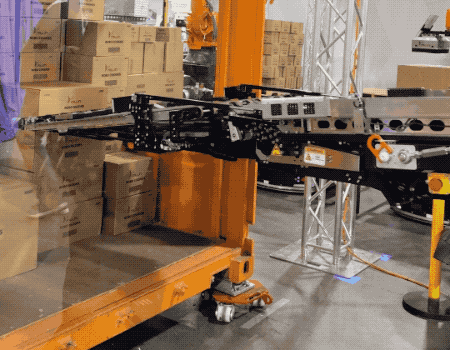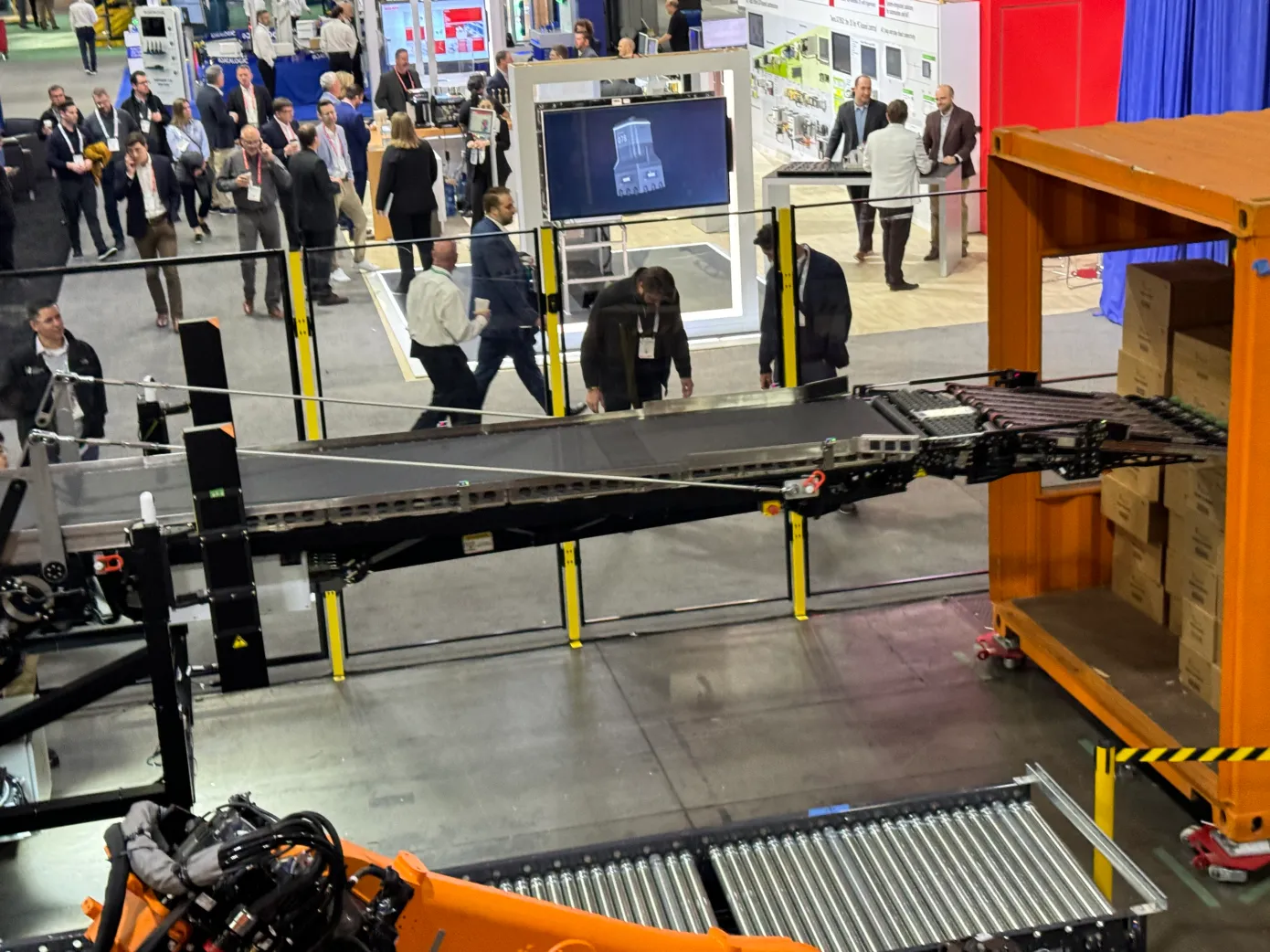The Modex conference this year showcased a notable trend: a surge in interest in truck unloading solutions among companies involved in warehouse robotics. What was once a niche area has now attracted attention from numerous players, each offering variations on a common theme: a robotic arm mounted on a mobile base capable of moving in and out of crates.
However, TruckBot stands out from the crowd. Unlike other systems that feature a traditional robotic arm, TruckBot incorporates a unique design. Upon first glance, it may be difficult to discern its function. Rather than a standalone robotic arm, TruckBot is integrated with a conveyor belt system. This innovative setup allows TruckBot to move vertically (up to 10 feet), horizontally, and boasts an impressive reach of 52 feet, enabling it to access containers without needing to leave its position on the belt.
Interestingly, TruckBot is described using the terminology typically associated with robotic arms, including references to wrist articulation and a “gripper” at the end. In reality, the end-effector consists of pneumatic suction cups that adhere to the side of the box. This unconventional approach to truck unloading demonstrates the potential for creative solutions in the rapidly evolving field of warehouse robotics.

Truck unloading presents a significant physical challenge in warehouse operations, which is why companies like Pickle Robotics and Boston Dynamics have been heavily focused on developing solutions for this task. The work is not only repetitive and labor-intensive but also often exposes workers to extreme temperatures, as containers are typically located outside of warehouses.
While the TruckBot system may appear cumbersome compared to the agility of Boston Dynamics’ Stretch robot, it offers a clever approach by integrating picking directly into the conveyor system. Despite its bulk, the system is versatile, capable of handling a range of box sizes weighing up to 50 pounds each. Mujin, the company behind TruckBot, claims it can process up to 1,000 boxes per hour. Observing it in action may evoke imagery of a large, herbivorous dinosaur made of metal, lumbering efficiently through its tasks.










